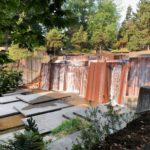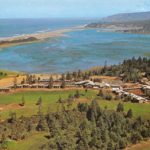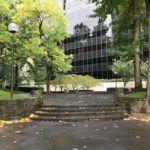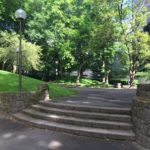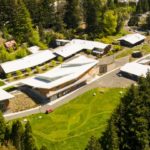By Laurie Matthews
What is a Cultural Landscape?
The prevailing definition for a cultural landscape in the United States comes from the National Park Service which defines it “as a geographic area, including both cultural and natural resources… associated with a historic event, activity, or person, or exhibiting other cultural or aesthetic values.”
The United Nations Environmental, Scientific and Cultural Organization (UNESCO) defines cultural landscapes internationally as “works of nature and humankind that express a long and intimate relationship between people and their natural environment.” While places like the Grand Canyon, National Mall, Golden Gate Park, and Devils Tower have national — and even international — significance, cultural landscapes vary widely in size and type. Previously considered to be settings for other historic or cultural resources, cultural landscapes are now understood to be historic resources in their own right.
The next great frontier for exploring Mid-Century Modern (MCM) design in Oregon is in its landscapes. As with MCM architecture, the best landscape work of this era encompasses both large-scale regional planning projects and more intimate and personal residential projects.
Following the form and function of Mid-Century Modern residential architecture, MCM cultural landscapes are restrained, while also respecting and highlighting the natural lines of a home’s design and mirroring the rectangular, transparent, and open forms of the structures themselves.
MCM landscapes build on the order imposed by modern design while allowing nature room to take its own course – especially in the Pacific Northwest where growing seasons are long and outdoor spaces are often incorporated into a home’s overall living space.
Other notable features of MCM landscapes include low-cost and low-care plants that create distinctive, private outdoor spaces in densely populated areas. The ultimate goal of MCM landscape design is to facilitate the seamless transition between indoor and outdoor spaces – a quality unsurpassed outside of the Pacific Northwest.
Although many others contributed to the field of landscape design in the mid-20th century, three noted landscape architects come to mind when considering iconic MCM landscape works: Barbara Fealy, Lawrence Halprin, and Robert Royston.
Barbara Fealy (1903-2000) lived and practiced in Oregon and was the designer of the Wessinger Garden, many notable and prized residential gardens at the Oregon Coast, and a number of larger projects including Salishan Lodge (where she worked with developer John Gray) and Timberline Lodge (where she worked with the U.S. Forest Service.) Fealy’s work at Salishan Lodge raised her profile tremendously, after which she became one of the most sought-after landscape architects in Oregon. She chose her projects and her collaborators with great care. Other notable works include designs for Catlin-Gabel School, Oregon School of Arts and Crafts, and Leach Botanical Garden. She also often collaborated with architects John Storrs and Saul Zaik.
In 2013, the above-mentioned Wessinger Garden was documented through the Historic American Landscape Survey (HALS), which is held at the Library of Congress.
Lawrence Halprin (1916-2009) created an iconic series of parks in downtown Portland, Oregon. Linked by pedestrian promenades, these public spaces include Ira Keller Fountain, Pettygrove Park, Lovejoy Fountain, and the Source Fountain. Ira Keller Fountain, co-designed with Angela Danadijeva was described by New York Times architecture critic Ada Louise Huxtable as “one of the most important urban spaces since the Renaissance” when it opened in 1970.
Listed in the National Register of Historic Places in 2013, these urban parks are arguably among Oregon’s most recognized works of the MCM era, and an inspiration to landscape architects, urban designers, and architects from around the world. Their innovative use of water – and the interactive quality of the fountains – heavily influenced later designs in Portland, including Salmon Street Springs, Pioneer Square, Tanner Springs, and Director Park.
One of Oregon’s most iconic landscape innovations of this era was the land use planning law, Senate Bill 100, which created growth boundaries around existing urban areas. Following the passage of that law, Lawrence Halprin developed future scenario planning for the entire Willamette Valley, which focused on concentrating urban development and preserving agricultural lands of farms and ranches.
Robert Royston (1918-2008) also made lasting contributions to MCM landscape design. Sunriver Resort, developed by John Gray, was designed by Royston. Sunriver is an excellent example of the innovations that were occurring in Oregon’s landscapes during an era when there was a great deal of focus on community planning and the emerging environmental movement.
Developed in response to the heavy, overly-ornamented and laborious aesthetics meant to display ostentatious wealth during the Victorian era, modernist landscape design was the first to practically address the effects of urbanization and rapid suburbanization in the post-War years. The low-maintenance and practical qualities of modern residential spaces became elements of neighborhood and regional land use planning, addressing the need for green space in urban areas and the need for cohesion in suburban areas.
From the inner-city Halprin Fountains to the sprawling neighborhoods of east Portland, the beauty of MCM landscapes lies in their enduring ability to provide living spaces that seamlessly combine architecture and nature. For this they are celebrated, mimicked, re-experienced, admired, and now preserved as significant cultural landscapes.


